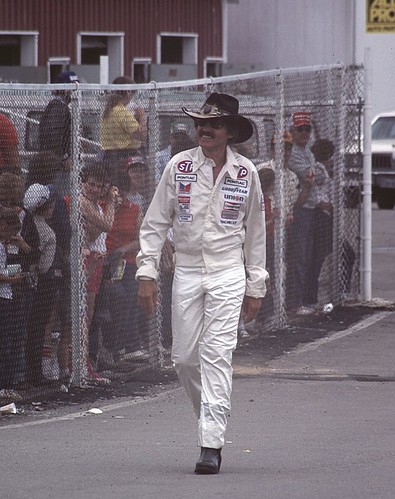The Long, Petty Friendship That Changed Art
Petty #Petty

It began, the story goes, with an insult, unless the insult was a compliment—with ambitious young artists, one never knows. Édouard Manet would have been about thirty when he visited the Louvre and met Edgar Degas, only two years his junior but as sullen as a teen-ager. Degas was hunched in front of a Velázquez painting of the Infanta Margarita Teresa, trying to copy what he saw. Manet, the chatty type, looked down at his fellow-artist’s attempt and said, “How audacious of you to etch that way, without any preliminary drawing, I would not dare do the same!” It was the early eighteen-sixties, and a two-decade friendship, marked by endless subliminal pokes and a few out-and-out slashes, had just been born.
“Portrait of the Artist, After Filippino Lippi” (ca. 1857).Art Work by Édouard Manet / Courtesy © Musée D’Orsay / RMN-Grand Palais; Photograph by Patrice Schmidt
“Audacious” is a weaselly word, but I mean the best when I say that “Manet/Degas,” the Met’s sprawling yet intimate two-hander, is an audacious show. To me, it comes as a breath of fresh air, since—I might as well admit this now—I’ve often found its co-stars easier to respect than to enjoy. With Degas, I know I’m not alone: the austerity of his paintings borders on nastiness. (That they’ve decorated so many little girls’ bedrooms is one of art history’s tartest ironies.) Manet is a gentler painter, beloved by many, but his work has a peculiar stiffness that’s sometimes hard for me to take in bulk—I can’t always tell if it comes from the artist, his subjects, or both. What follow, then, are the thoughts of a reformed skeptic, who’s still not blind to these artists’ foibles but has learned to love them unconditionally.
The Louvre meeting, almost too perfect-sounding to be true, was nothing special by nineteenth-century Parisian standards. These guys all knew one another, not just the artists but the writers and the politicians. (Baudelaire, Mallarmé, and Zola make cameos in this show, as does Antonin Proust, Manet’s childhood friend and later France’s Minister of Fine Arts.) Both Degas and Manet came from posh families and bobbed on the same vast sea of connections. Degas, despite being something of a loner by temperament, as well as an enthusiastic critic of women and Jews, seems to have been incapable of not knowing everyone. When Manet’s brother married the Impressionist artist Berthe Morisot, Degas gave him a portrait as a wedding present; Manet’s son later worked for the Degas family. Degas painted Manet, too, and drew him looking dark-browed and bushy-bearded.
“Self-Portrait in the Manner of Filippino Lippi” (ca. 1858).Art Work by Edgar Degas / Courtesy Robert Flynn Johnson
Apparently, Manet never returned the favor. The show’s curators, Stephan Wolohojian and Ashley E. Dunn, are wise not to overexplain this, or much else about the relationship. (Notice the lack of subtitle in the show’s name—just Manet and Degas, thanks very much.) As you walk through the Met, theories come to you unbidden. It could be the case, e.g., that Manet never painted Degas because he wasn’t as natural a portraitist (a fifth of his œuvre are still-lifes), though I suspect an unspoken hierarchy of reputations. For much of their friendship, Manet was the bigger deal, touted first for his success and then for his succès de scandale; Degas later became highly popular, but by then Manet was dead of syphilis. In some of the portraits at the Met, one senses Degas eying his cooler friend with a lean and hungry look, begging to be eyed in return. The show’s most revealing pieces, however, are a pair of heads modelled on Filippino Lippi’s self-portrait. Manet dials up the gawkiness of the lips and teeth, but not out of cruelty; there’s plenty of warmth in this face. Degas’s version is smoother, with a silvery sheen as pretty as it is chilly. They were only in their twenties, but they already knew what kind of artists they wanted to be.
The Lippis raise an important point, which “Manet/Degas” can’t help circling back to: great painters are not necessarily good painters. Art lovers, probably overcorrecting for “my kid could do that” philistinism, can be touchy about this, but in the case of Manet, a painter as great as he was technically dubious, it can’t be said too often. In much of his early work, near and far bump against each other—the rainbow in “Fishing” (ca. 1862-63) is as phony as the backdrop for a middle-school play—and his figures never really seem to be standing on solid ground, as though he’s cut them out of someone else’s painting. In the eighteen-sixties, Manet cut out a significant chunk of his own painting, “Episode from a Bullfight,” in response to criticism that he’d botched the perspective. It’s the kind of story you rarely find in art mythology: avant-gardists are supposed to be indifferent to critics, deliberate in their desecrations of tradition. In the case of Manet, the celebrated ur-modernist who made the world safe for flat, unfinished-looking art, it’s extra startling. Surely he, of all people, understood what he’d done.